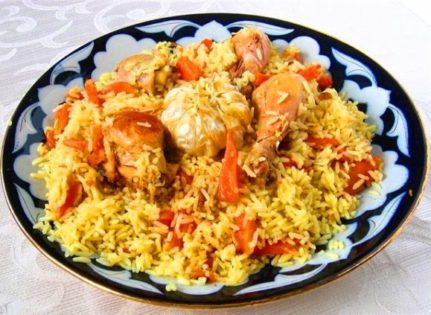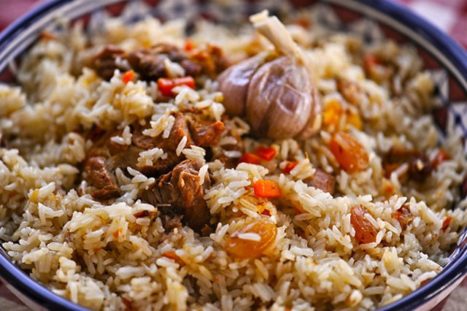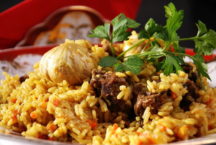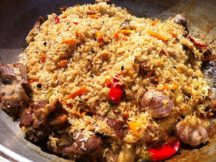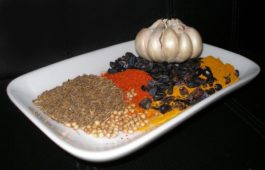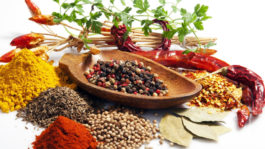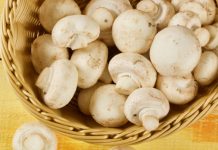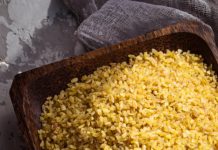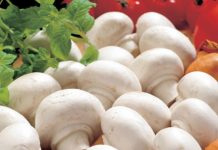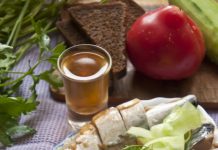Classic pilaf is impossible to imagine without a lot of spices. It is they who create that unique, strong, mouth-watering smell, from which saliva instantly starts to flow. Spices for pilaf can be purchased at the supermarket - on the shelves with spices there are both ready-made sets for this oriental dish, as well as individual components from which you can make your own combination.
Material Content:
The classic composition of spices for pilaf
Spices in eastern cuisine are the very essence of this national cuisine.
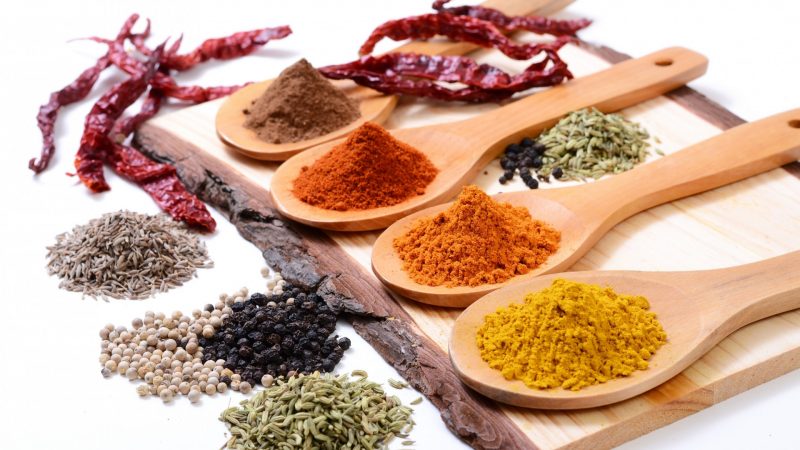
The classic set of spices for pilaf with meat or fish consists of:
- zira (cumin) - the seed part of the plant is used. The grains are either used whole or milled into a fragrant powder. In real pilaf, this spice is the main one. According to the classics, Indian black cumin is used, but in our area such a spice is very difficult to find. Dishonest merchants can replace real grains with carrot seeds, for verification it is enough to grind a couple of grains between your fingers and smell.
- Barberry - used in the form of berries to give a sour note and neutralize fat. It is considered the second most important spice that should be present in traditional pilaf.
- garlic - a common herbaceous plant that is added to many hot and cold dishes, sauces, canned food and more. It is famous for its strong aroma, which greatly increases the appetizing smell and taste of dishes.
- saffron (can be replaced with turmeric, which is often done in our area due to the high cost of saffron) - gives the dish a light, pleasant aroma and golden color for rice. For 1 kg of cereals, ½ teaspoon is usually added.
What spices are added to pilaf in addition to the classic set:
- dried finely ground tomatoes;
- sweet paprika;
- coriander seeds;
- a mixture of several varieties of pepper.
To give a sweet touch to pilaf, not only spices, but also dried fruits are used. It can be:
- dried apricots - dried apricot;
- prunes - dried plums;
- kishmish - a type of dried grapes.
Non-traditional, rarely used additives to pilaf are considered:
- vanilla;
- cinnamon;
- ground nutmeg;
- sumah - a sour, astringent spice, it is more used for taste, practically does not give a smell;
- rosemary - a spice with a sweet, camphor aroma resembling a pine smell, gives the dish a pinworm;
- savory - a spice that gives a bitter, even burning taste, reminiscent of hot pepper.
Also, fenugreek can be used - a spice with a slightly nutty, bitter note in taste.
The taste and aroma are very strong, some reminiscent of mushroom. Spice is in many well-known suneli hops.
On a note. Spices should be correctly added to pilaf - in the middle of the stage of frying vegetables with meat, when the latter is almost ready.
So first, the meat product and vegetables are soaked in spices, and then rice, which will be slowly cooked in the liquid with spices.
What spices are added to pilaf with chicken?
Pilaf with chicken is not too fat (if it's not a broiler). The poultry meat has a delicate taste, so the dish can be given a little piquancy.
Read also:chicken pilaf - recipe
Spices for pilaf with chicken:
- ground black pepper;
- slices of hot chili;
- dried, and better, fresh parsley;
- zira seeds;
- red and black barberry;
- dried red pepper;
- ground thyme;
- fresh or dried garlic;
- saffron or turmeric.
Chicken pilaf, as a rule, is made not too saturated with spices.
Pork pilaf recipe
Pig pilaf is famous for its juiciness, fat content and rich taste.

Spices complement well pork meat:
- sumac;
- rosemary;
- sweet ground paprika;
- dried basil;
- turmeric;
- garlic in any form;
- Lavrushka
- barberry;
- zira.
With lamb
Spices for lamb pilaf we suggest using the following:
- turmeric;
- zira;
- barberry;
- fenugreek;
- sumac;
- paprika;
- curry;
- coriander;
- savory.
With beef
Pilaf with beef is no less satisfying than with pork or lamb.

The following spices are recommended for pork pilaf:
- saffron;
- paprika;
- Chile;
- coriander;
- zira;
- barberry.
Everything except the berries of barberry should be chopped.
From turkey
For pilaf with turkey, you can use the same set of spices that is suitable for chicken.
We also suggest trying the following combination:
- turmeric;
- saffron petals;
- walnut grass or curry.
Optionally, add garlic and classic ground black pepper.
Oriental spices for pilaf
Traditional pilaf should be with a rich and even spicy taste.
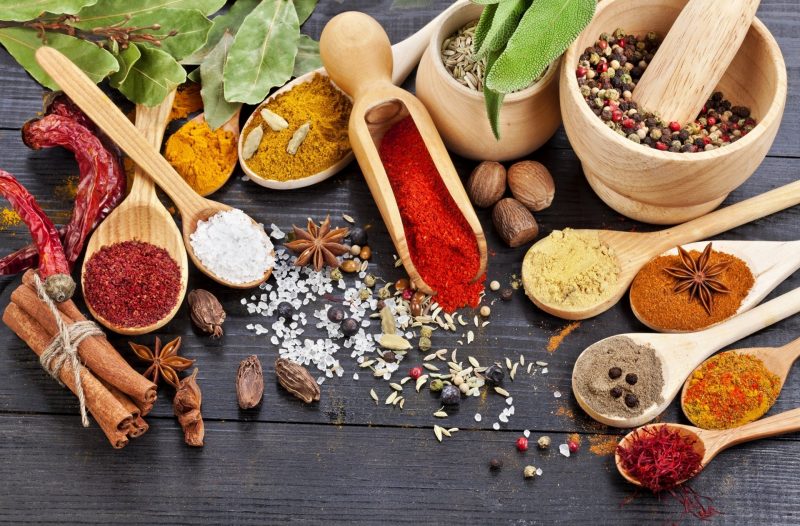
Uzbek spices for pilaf must contain:
- hot pepper pods - the main source of sharpness for oriental pilaf;
- cumin / zira - gives a strong aroma, which is famous for classical pilaf;
- barberry - essential for a slight acidity and strong aroma.
These three spices in the east are considered the main in the preparation of pilaf. Other spices are added in less quantity than the top three.
How to make spices for pilaf?
Preparing a mixture of spices is quite simple - you just need to mix the ingredients together and add in the desired amount during cooking. The amount depends on the preferences of the person himself - if you like rich dishes, you can add a little more, if more moderate - less.
For example, for 1 kg of meat ⅓ tablespoon of spices will create a light aroma, ⅔ tablespoon will give the dish an average saturation, and a tablespoon with a slide or more will make the dish saturated, as eastern ethnicities like it.
Ingredients can be purchased in a spice shop by weight or in a grocery supermarket, packaged in small bags.
It is worth remembering several rules for the preparation of spices:
- It is recommended to grind dry grains and herbs for the best return of aroma and taste in the coffee grinder or to grind in a mortar. Berries and fresh herbs are best cut a little and add to the dish almost whole.
- If necessary or personal desire, you can replace some components. Saffron and turmeric, zira and caraway seeds, barberry and raisins / cranberries are considered interchangeable spices.
- Fresh garlic is more spicy, therefore it is preferable not to replace it with dried.
For 5-7 servings of pilaf, the following proportions of spices are recommended:
- ½ tea l turmeric / saffron;
- 1 tea l sweet paprika;
- 5-8 berries of barberry;
- 4-5 medium garlic cloves;
- ½ tea l mixtures of peppers;
- ⅙ tea l zirs;
- 1 table. l without a hill of salt.
In ancient times, spices were used rather for the preservation of dishes for lack of a cool place to store food. And today, spicy saturation has become integral to all eastern cooking.


